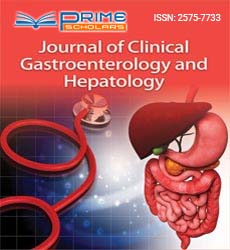Perspective - (2024) Volume 8, Issue 1
Exploring the Esophagus: Anatomy, Function, and Common Disorders
Xia Thumo*
Department of Gastroenterology, Fudan University, China
*Correspondence:
Xia Thumo,
Department of Gastroenterology, Fudan University,
China,
Email:
Received: 31-Jan-2024, Manuscript No. IPJCGH-24-19083;
Editor assigned: 02-Feb-2024, Pre QC No. IPJCGH-24-19083 (PQ);
Reviewed: 16-Feb-2024, QC No. IPJCGH-24-19083;
Revised: 21-Feb-2024, Manuscript No. IPJCGH-24-19083 (R);
Published:
28-Feb-2024, DOI: 10.36648/2575-7733.8.1.08
Introduction
The human body is a marvel of complexity, with each organ
playing a vital role in maintaining health and function. Among
these, the esophagus stands out as a crucial component of
the digestive system, facilitating the passage of food and
liquids from the mouth to the stomach. In this comprehensive
exploration, we delve into the anatomy, function, and common
disorders of the esophagus, shedding light on its importance
in overall well-being. The esophagus is a muscular tube
approximately centimeters in length, extending from the throat
to the stomach. Situated behind the trachea, or windpipe, and
in front of the spine, the esophagus is composed of several
layers.
Description
The innermost layer of the esophagus, lined with mucous
membrane, which secretes mucus to lubricate and protect
the walls. This layer contains blood vessels, nerves, and glands
that secrete fluids to aid in digestion. Comprising both circular
and longitudinal muscle fibers, the muscularis propels food
downward through a series of coordinated contractions known
as peristalsis. The outermost layer of connective tissue that
anchors the esophagus to surrounding structures. The primary
function of the esophagus is to transport food and liquids from
the mouth to the stomach, a process known as swallowing
or deglutition. This complex sequence involves several
coordinated actions. The voluntary phase of swallowing, during
which food is chewed and mixed with saliva to form a bolus. As
the bolus reaches the back of the throat, the swallowing reflex is
triggered, initiating a series of involuntary muscle contractions
that propel the food downward. The bolus enters the esophagus
and is propelled toward the stomach by peristaltic contractions
of the esophageal muscles. At the junction of the esophagus
and stomach, the LES relaxes to allow the passage of food into
the stomach and then contracts to prevent the backflow of
stomach contents into the esophagus. Despite its resilience
and efficiency, the esophagus is susceptible to various disorders
that can interfere with its normal function. Some of the most
common disorders include. A chronic condition characterized
by the backflow of stomach acid into the esophagus, leading
to symptoms such as heartburn, regurgitation, and chest pain.
Narrowing of the esophagus due to scar tissue formation,
often resulting from chronic inflammation or repeated injury.
A complication of in which the normal lining of the esophagus
is replaced by abnormal cells, increasing the risk of esophageal
cancer. Although relatively rare, cancer can develop in the
cells lining the esophagus, typically in the form of squamous
cell carcinoma or adenocarcinoma. Diagnosing esophageal
disorders often involves a combination of medical history,
physical examination, imaging studies, and endoscopic
procedures such as upper gastrointestinal endoscopy.
Conclusion
Treatment options vary depending on the underlying
condition but may include lifestyle modifications, medication,
dietary changes, and surgical intervention. In conclusion, the
esophagus plays a critical role in the digestive process, serving
as a conduit for the passage of food and liquids from the mouth
to the stomach. Its intricate anatomy and coordinated function
are essential for maintaining overall health and well-being. By
understanding the anatomy, function, and common disorders
of the esophagus, individuals can take proactive steps to
promote digestive health and address any underlying issues
that may arise.
Citation: Thumo X (2024) Exploring the Esophagus: Anatomy, Function, and Common Disorders. J Clin Gastroenterol Hepatol.
8:08.
Copyright: © 2024 Thumo X. This is an open-access article distributed under the terms of the Creative Commons Attribution
License, which permits unrestricted use, distribution, and reproduction in any medium, provided the original author and source
are credited.

